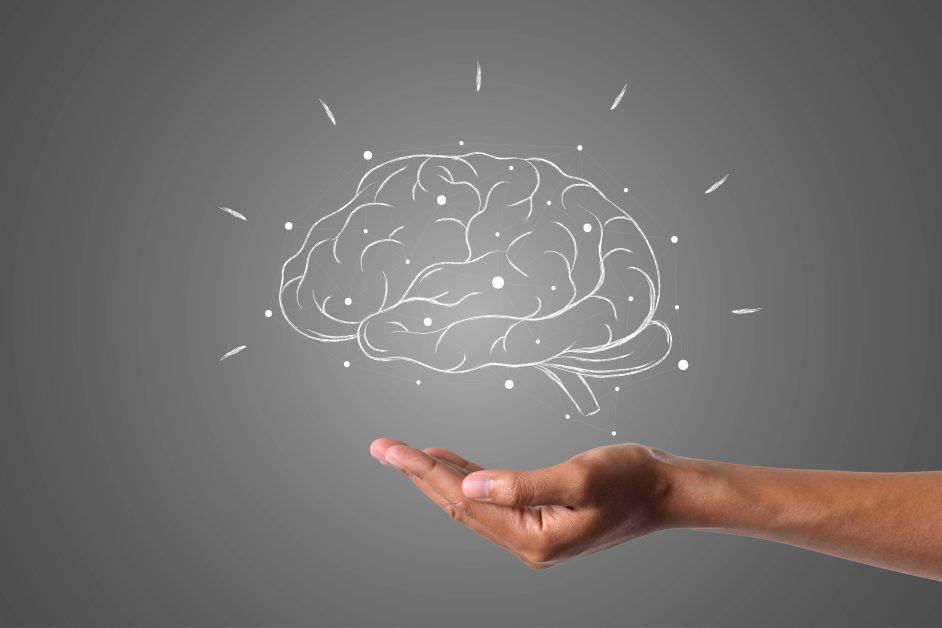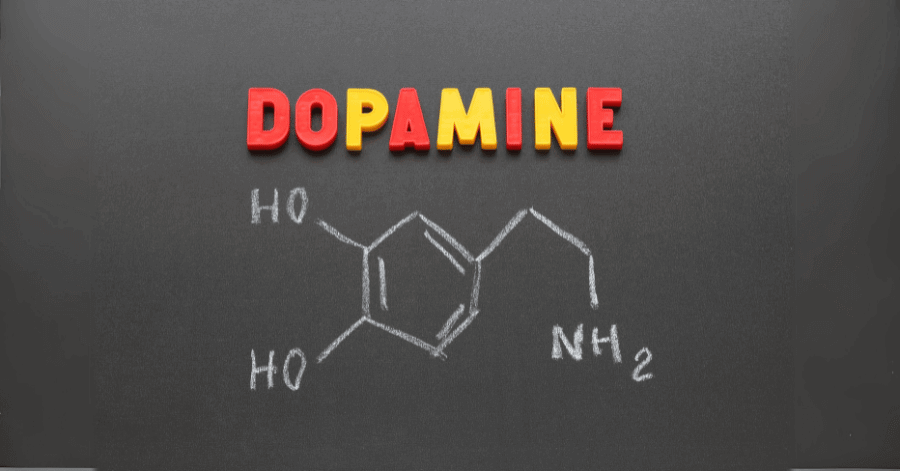
The Conscious Mind: Science, Awareness, and Human Potential
What is consciousness? Explore how science explains awareness, decision-making, and the mysteries of the conscious mind.

Why is it so hard to get off the couch, resist the cookie, or stop scrolling when you know you should be doing something better for yourself? It isn’t a lack of motivation or even discipline — it’s something baked into your biology. Neuroscientists call it limbic friction: the constant tug-of-war between your brain’s emotional drive for comfort and your rational drive for long-term growth.
This internal conflict is not a flaw — it’s a feature. For most of human history, the limbic system kept us alive by prioritizing safety, rest, and immediate rewards. But in today’s world, those same instincts collide with modern goals like staying healthy, building a business, or sticking to a workout routine. The result is that grinding sense of resistance you feel whenever your “survival brain” and your “planning brain” pull in opposite directions.
In this article, we’ll break down the science of limbic friction, why it happens, and — most importantly — how you can work with your brain instead of against it to build habits, reduce resistance, and achieve long-term success.
At its core, limbic friction is the mental tug-of-war between two of the most powerful regions of your brain that drive the majority of your decisions: the limbic system and the prefrontal cortex.
The limbic system, often called the “emotional brain,” is a more primal mechanism and is wired for survival. It wants comfort, safety, food, rest, and anything that feels immediately rewarding.
The prefrontal cortex, by contrast, is the rational planner. It thinks about your long-term goals, weighs consequences, and tries to push you toward discipline. It’s also the part of the brain that makes humans uniquely advanced thinkers—capable of abstract reasoning, complex planning, and building a life that extends far beyond instinct and immediate survival.

You’ll feel limbic friction anytime your emotional impulses clash with your rational intentions. For me, it shows up almost every evening after work. My limbic system craves the couch and some rest, while my prefrontal cortex reminds me that a 30-minute workout is non-negotiable if I want to stay healthy long-term. The habit helps – it’s easier now than when I first started – but the internal battle hasn’t disappeared. That internal resistance and grinding sense of effort is limbic friction.
Limbic friction isn’t a sign that you’re weak or lazy – it’s a built-in feature of human wiring. Recognizing it is the first step to working with your brain instead of constantly fighting against it.
From a neuroscience perspective, limbic friction occurs because the limbic system is ancient, fast, and deeply tied to dopamine and stress signals. The prefrontal cortex is newer, slower, and requires more energy to override those impulses.
Limbic friction is literally your brain’s operating systems colliding. And the stronger the conflict, the harder it feels to act in line with your long-term goals.
It may seem like a sign of weakness or a biological mistake, but limbic friction is the result of some very important biological processes, without which homosapiens likely wouldn’t have made it to where we are today.
The limbic system is designed to prioritize comfort, energy conservation, and immediate rewards because, for most of human history, those instincts kept us alive.
For instance, if our ancestors came across a patch of ripe fruit, their limbic system urged them to eat as much as possible on the spot. That drive for immediate reward was essential when food was scarce and uncertain — but today, it’s the same wiring that makes us reach for cookies even when we’re not hungry.
Limbic friction isn’t just bad luck – it’s the predictable outcome of how our brains evolved. For most of human history, survival depended on two things: conserving energy and avoiding risk.
The limbic system became finely tuned to nudge us toward immediate comfort – rest instead of effort, sugar and fat instead of fasting, safety instead of uncertainty. These instincts were life-saving when food was scarce and predators lurked nearby.
Fast forward to today, and that same wiring now works against many of our modern goals. The limbic system still craves comfort and instant gratification, but the challenges we face – like building a business, staying healthy, or pushing through a tough workout – require delayed gratification and long-term planning. That’s the job of the prefrontal cortex, the part of your brain that handles logic, self-control, and goal setting.
The conflict arises because the limbic system operates quickly and emotionally, while the prefrontal cortex is slower and more deliberate. When you feel that intense pull to procrastinate, hit snooze, or eat the donut instead of the salad, it’s not because you lack willpower – it’s because your evolutionary instincts are colliding with your modern aspirations.
Limbic friction happens because your brain is running two operating systems at once: one designed for survival in the wild, and another designed for thriving in the modern world. That friction is the “cost” of being human, but it’s also the reason mastering it can lead to extraordinary growth.

You don’t need a neuroscience textbook to see limbic friction in action. You experience it every day, even if you haven’t yet recognized it. It’s that moment when your brain pulls you in two directions at once, and the choice feels harder than it should.
These aren’t signs of weakness – they’re the natural result of your brain’s two systems pulling in opposite directions. By recognizing these moments for what they are (limbic friction) you can begin to manage them instead of constantly feeling guilty or frustrated.
The first thing to understand about limbic friction is that you can’t make it disappear. The limbic system is ancient, fast, and automatic. It reacts before you even know what’s happening, like flinching at a loud noise or feeling the pull toward comfort food after a stressful day.
The prefrontal cortex, by contrast, is slower and deliberate. It comes online a fraction of a second later to evaluate options and weigh consequences.
Although it lasts only seconds, this speed gap between the limbic system and the prefrontal cortex explains why you can’t simply “think your way” out of limbic friction. The impulses will always arise; they’re built into human wiring. But here’s the good news: while you can’t control the first thought, you can train the second response. Neuroscience calls this top-down regulation – when the prefrontal cortex learns to step in after the limbic surge.
Each time you override the impulse, by choosing focus over procrastination, or exercise over the couch, you reinforce the neural pathways of discipline. Thanks to neuroplasticity, the brain literally reshapes itself, making the rational response faster and more natural over time. In parallel, by linking small rewards to good behaviors, you can redirect dopamine (the neurotransmitter of anticipation) so it fuels your discipline instead of undermining it.
Overcoming limbic friction isn’t about silencing the chimp – it’s about training your rational brain to take the wheel once it regains control.

Knowing that impulses are inevitable, the real question becomes: how do you make it easier for your prefrontal cortex to win the battle? The answer lies in reducing friction for good habits and increasing friction for bad ones.
The goal isn’t to eliminate the internal tug-of-war. It’s to shift the odds in your favor so that when the limbic system fires off an impulse, your rational brain has a smoother path to follow. Over time, these strategies compound, turning once-difficult choices into almost automatic behaviors.
If you take only one lesson from limbic friction, let it be this: the battle never fully goes away — and that’s okay. Every day, your limbic system will throw impulses your way. Some will be small (hit snooze, scroll for a few minutes), and some will be big (skip the gym, abandon a project). Success doesn’t come from eliminating those urges, but from consistently managing them.
Over time, the small victories matter most. Each time your prefrontal cortex overrides the initial pull of the limbic system, you strengthen the circuitry of discipline through neuroplasticity. Habits become easier, routines feel natural, and the daily friction loses some of its power.
The compounding effect is what drives long-term success. Choosing to work out when you don’t feel like it, focusing for 25 minutes instead of opening social media, or cooking a healthy meal instead of defaulting to takeout might feel insignificant in the moment. But strung together over months and years, these choices create exponential returns in health, productivity, and personal growth.
In the end, limbic friction isn’t your enemy — it’s a feature of being human. By learning to recognize it, expect it, and work with it, you turn a source of daily struggle into a powerful tool for growth. Discipline stops being a constant uphill battle and starts becoming your default operating system. That’s when long-term success becomes inevitable.
Limbic friction is the mental tug-of-war between two of the most powerful regions of your brain that drive the majority of your decisions: the limbic system and the prefrontal cortex.
The limbic system, often called the “emotional brain,” is a more primal mechanism and is wired for survival. It wants comfort, safety, food, rest, and anything that feels immediately rewarding.
The prefrontal cortex, by contrast, is the rational planner. It thinks about your long-term goals, weighs consequences, and tries to push you toward discipline.
Although it lasts only seconds, this speed gap between the limbic system and the prefrontal cortex explains why you can’t simply “think your way” out of limbic friction. The impulses will always arise; they’re built into human wiring. But here’s the good news: while you can’t control the first thought, you can train the second response. Neuroscience calls this top-down regulation – when the prefrontal cortex learns to step in after the limbic surge.
The first thing to understand about limbic friction is that you can’t make it disappear. The limbic system is ancient, fast, and automatic. It reacts before you even know what’s happening, like flinching at a loud noise or feeling the pull toward comfort food after a stressful day.

What is consciousness? Explore how science explains awareness, decision-making, and the mysteries of the conscious mind.

Explore how your conscious thoughts and subconscious patterns work together to shape habits and decision-making.

Foods to eat, what to limit, and the heart-health and longevity benefits backed by research.

Overstimulation drains your motivation. Discover how to reset dopamine naturally for better focus, balance, and productivity.

No matter how much knowledge we have, we all need that extra oomph to get us to through tough challenges. Here are the 3 best motivational books that will give you that extra boost.

Discover how to stop overthinking in 5 practical steps: embrace uncertainty, limit decision-making time, and focus on actionable steps.
You’ll Learn:
Effective Immediately: 5 Powerful Changes Now, To Improve Your Life Tomorrow.
Click the purple button and we’ll email you your free copy.